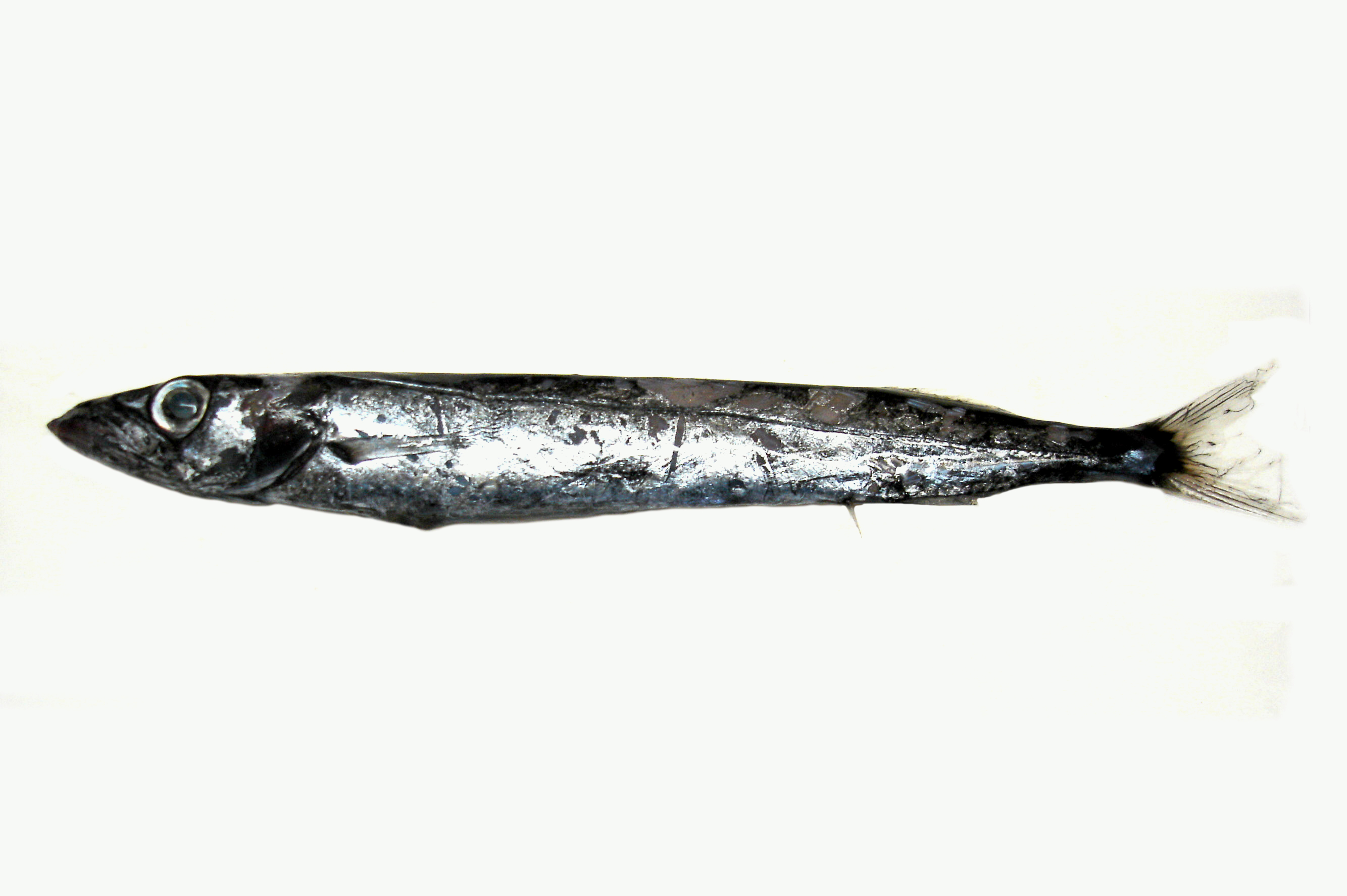Black Snake Mackerel, Nealotus tripes Johnson 1865

A Black Snake Mackerel, Nealotus tripes, from off Fogo Island, Cape Verde Islands, Atlantic Ocean. Source: Kimberly Wieber / Smithsonian Institution, National Museum of Natural History, Department of Vertebrate Zoology, Division of Fishes . License: CC BY Attribution-Noncommercial-ShareAlike
A blackish brown gempylid with pale brown dorsal and anal fins, and a black mouth, branchial cavities and peritoneum.
Black Snake Mackerel, Nealotus tripes Johnson 1865
More Info
|
Distribution |
Off the Houtman Abrolhos, Western Australia, to north of Bathurst Island, Northern Territory, and off the northern Great Barrier Reef, Queensland, to off Batemans Bay, New South Wales; also the Lord Howe Province in the Tasman Sea. Elsewhere the species is circumglobal.in all tropical, sub-tropical and temperate seas. An oceanic, epipelagic to mesopelagic species, found from surface waters to a depth of 1,646 m. |
|
Features |
Dorsal fin XX-XXI, 0, 0, 16-19; Anal fin II, 15-19; Pectoral fin 13-14. Pelvic fins reduced to single spine. Second dorsal and anal fins followed by two finlets. Body elongate and compressed. Body depth 7-9 times into standard length. Head length 4 times into standard length. Lower jaw protrudes, both jaws without dermal processes. Three pairs of rigid, and 0-3 pairs of depressible fang-like teeth in upper jaw, One pair of fang-like teeth in lower jaw. Lateral line single, reasonably straight. Scales large, easily dislodged. |
|
Size |
To 25 cm SL. |
|
Colour |
Body black-brown, dorsal and anal fin pale brown. Buccal and branchial cavities black. |
|
Feeding |
Feeds on fishes, including myctophids (lanternfishes), cephalopod molluscs and crustaceans. |
|
Biology |
The eggs and larvae are pelagic. |
|
Fisheries |
Of no interest to fisheries. |
|
Conservation |
None. |
|
Remarks |
Little is known of the biology of the Black Snake Mackerel, one of the smallest members of the family Gempylidae. |
|
Etymology |
The specific name is from the Latin tri- (= three) and pes (= feet), possibly in reference to the 'tripod' formed from the pelvic-fin spines and a dagger-shaped spine between anus and anal fin. |
|
Species Citation |
Nealotus tripes Johnson 1865, Proceedings of the Zoological Society of London 1865 (pt 2): 434. Type locality: Madeira. |
|
Author |
Bray, D.J. & Schultz, S. 2025 |
|
Resources |
Black Snake Mackerel, Nealotus tripes Johnson 1865
References
Collette, B.B., Smith-Vaniz, W.F., Williams, J.T., Curtis, M., Pina Amargos, F. & Grijalba Bendeck, L. 2015. Nealotus tripes. The IUCN Red List of Threatened Species 2015: e.T16509242A16510887. https://dx.doi.org/10.2305/IUCN.UK.2015-4.RLTS.T16509242A16510887.en. Accessed on 15 May 2025.
Johnson, J.Y. 1865. Description of a new genus of trichiuroid fishes obtained at Madeira with remarks on the genus Dicrotus Günther, and on some allied genera of Trichiuridae. Proceedings of the Zoological Society of London 1865: 434-437 See ref at BHL
Jordan, D.S. & Evermann, B.W. 1896. The fishes of North and middle America: a descriptive catalogue of the species of fish-like vertebrates found in the waters of North America, north of the Isthmus of Panama. Bulletin of the United States National Museum 47(1): 1-1240 See ref at BHL
Nakamura, I. & Parin, N.V. 1993. FAO Species Catalogue. Snake mackerels and cutlassfishes of the world (families Gempylidae and Trichiuridae). An annotated and illustrated catalogue of the Snake Mackerels, Snoeks, Escolars, Gemfishes, Sackfishes, Domine, Oilfish, Cutlassfishes, Scabbardfishes, Hairtails, and Frostfishes known to date. Fisheries Synopsis No. 125, Vol. 15. Rome : FAO 136 pp. 200 figs.
Nakamura, I. & Parin, N.V. 2001. Gempylidae, Trichiuridae. pp. 3698-3720 in Carpenter, K.E. & Niem, T.H. (eds). The Living Marine Resources of the Western Central Pacific. FAO Species Identification Guide for Fisheries Purposes. Rome : FAO Vol. 6 pp. 3381-4218.
Nakamura, I. & Paxton, J.R. 1977. A juvenile gemyplid fish, Nealotus tripes, from eastern Australia. The Australian Zoologist 19(2): 179-184
Ogilby, J.D. 1899. Additions to the fauna of Lord Howe Island. Proceedings of the Linnean Society of New South Wales 23(4): 730-745 (described as Machaerope latispinis, type locality Lord Howe Island) See ref at BHL
Stewart, A.L. 2015. 230 Family Gempylidae, pp. 1602-1615 in Roberts, C.D., Stewart, A.L. & Struthers, C.D. (eds). The Fishes of New Zealand. Wellington : Te Papa Press Vol. 4 pp. 1153-1748.


